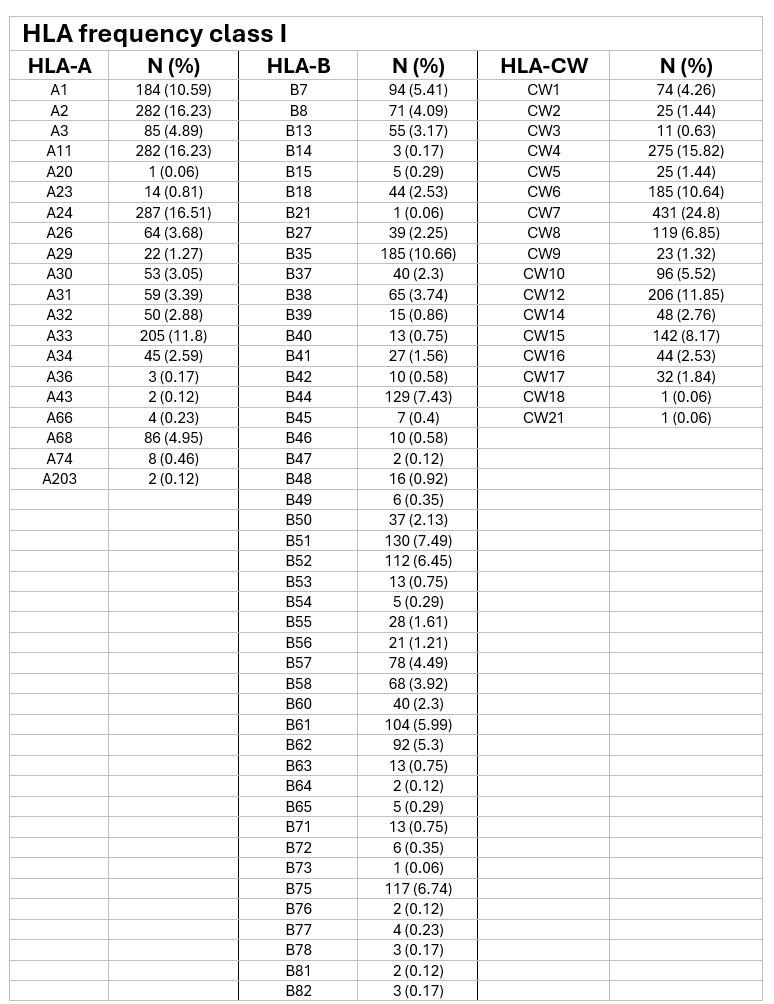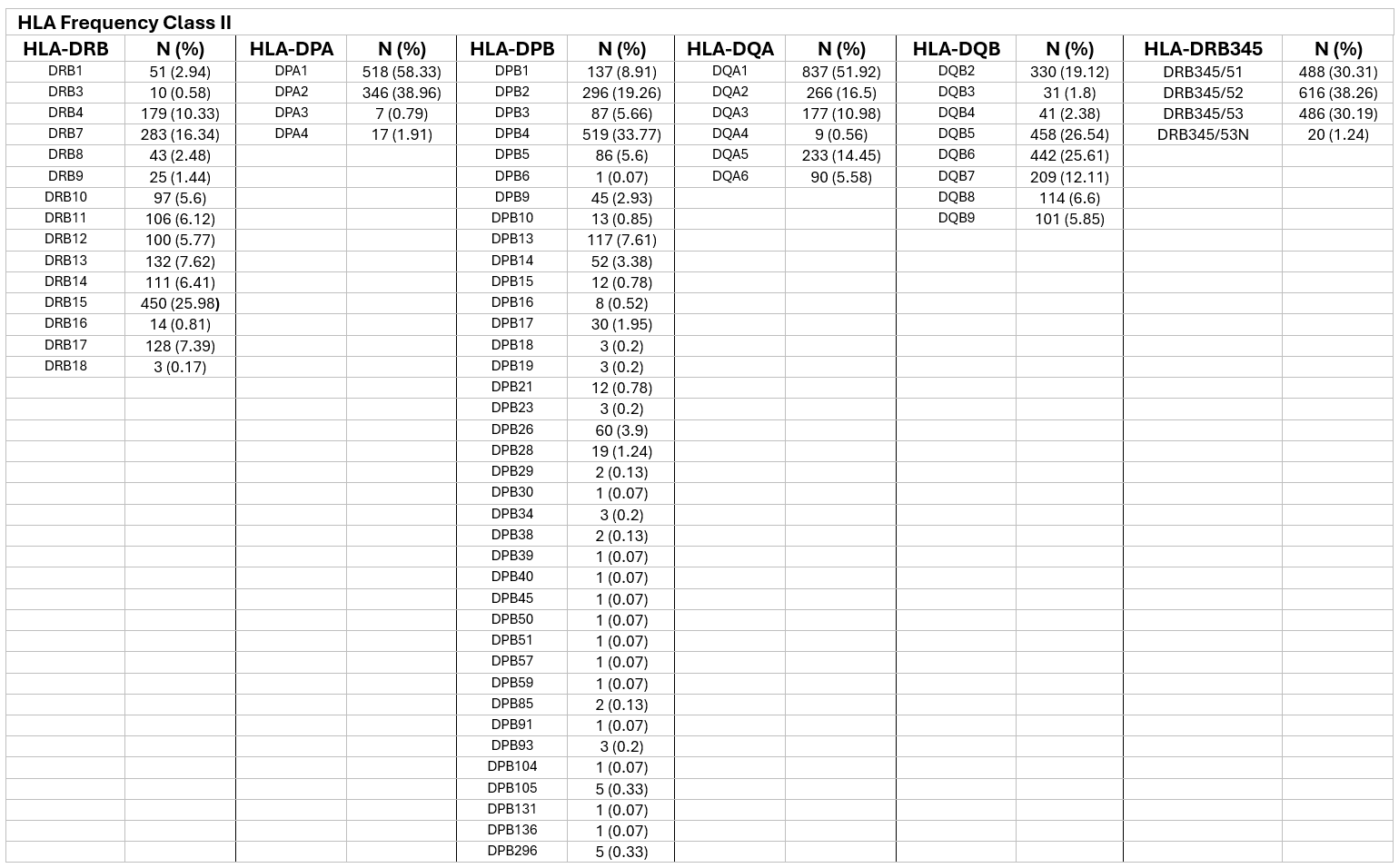HLA genotype frequencies in Saudi Arabia: Enhancing organ transplantation and development of a national PRA calculator
Jamail Ghafwari1, Lina O. Aldakhil1, Salim S. Ghandorah1, Ahmad M. Jaafari2, Hanan M. Almutairi2, Waleed B. Alharbi2, Raed A. Alghamdi2, Moheeb Alawwami3.
1Research and Development Department, Saudi Center for Organ Transplantation, Riyadh, Saudi Arabia; 2Donor Affairs and Organ Allocation Department, Saudi Center for Organ Transplantation, Riyadh, Saudi Arabia; 3Histocompatibility and Immunogenetics Laboratory., King Faisal Specialist Hospital and Research Center, Riyadh, Saudi Arabia
Introduction: Human Leukocyte Antigens (HLA) helps in distinguish between self and foreign cells with two main classes: Class I (HLA-A, HLA-B, HLA-C) and Class II (HLA-DP, HLA-DQ, HLA-DR). These molecules are essential for immune response regulation and organ transplantation compatibility. However, challenges such as prolonged waiting times for compatible organs and pre-transplant sensitization significantly impact transplantation outcomes. Sensitization, when a recipient’s immune system becomes exposed to foreign antigens, increases the likelihood of organ rejection and complicates the search for suitable donors. Calculated Panel Reactive Antibody (cPRA) is a widely used metric to assess the risk of transplant rejection by evaluating a recipient’s immune profile. However, global cPRA calculators often do not account for the unique HLA frequencies present in specific populations, such as those in Saudi Arabia, potentially compromising the accuracy of transplantation compatibility assessments.
Objectives:
Methode: HLA typing data of 869 deceased donors were collected retrospectively between 2011 and 2024 from the archive of the Saudi Center for Organ Transplantation (SCOT), as well as multiple transplantation centers across Saudi Arabia, UAE, and Kuwait. Data was analyzed using STATA V.14. Antigen frequency calculated as antigen/papulation .
Results: Among Class I antigen, HLA-A24, A11, and A2 each had a frequency of 16%, followed by A33 at 11%. For HLA-B, B35 was the most frequent antigen at 11%, while B51 and B44 each had a frequency of 7%. Regarding HLA-C, Cw7 (25%) and Cw4 (16%) were the most common. Detailed antigen frequencies for Class I are presented in Table 1. For Class II antigen, HLA-DPA1 was the most prevalent at 58%, followed by DPA2 at 39%. %. On the beta chain, DPB4 showed the highest frequency at approximately 34%. HLA-DQA1 was the most common DQA antigen at 52%. About 27% of the population carried DQB5. Furthermore, DRB5 and DRB4 were found in over 30% of the population, and DRB3 in 38.2%. Only 1.24% of individuals carried the DRB4N (null expression) antigen. Detailed antigen frequencies for Class II are presented in Table 2.


Conclusion: Our data provide a detailed picture of the genetic diversity within the Saudi donor population. By utilizing local HLA frequency data, we can more accurately estimate cPRA, thereby improving our ability to predict the senstization of a patient among the population. This enables more effective virtual crossmatching and supports the prioritization of highly sensitized patients who are difficult to match. This tailored approach will contribute to more accurate and effective transplantation strategies, and therefore improve transplantation outcomes. In the future, incorporating high-resolution HLA typing into the cPRA calculator will further enhance its precision and clinical utility.
Saudi Center for Organ Transplantation .
[1] HLA
[2] cPRA
[3] Panel Reactive Antibody
[4] Panel Reactive Antibody calculator
[5] Donor Allocation
[6] Compatibility
[7] Virtual Cross-match